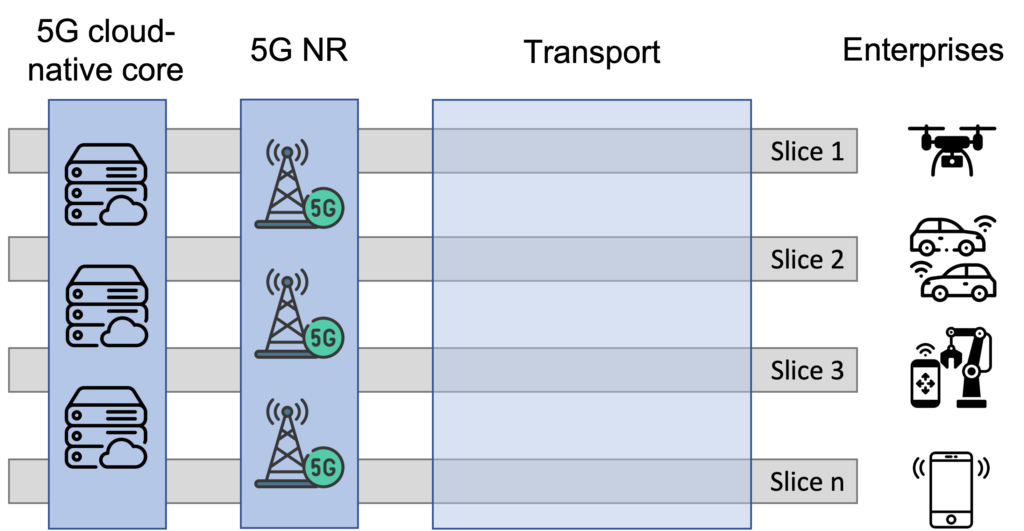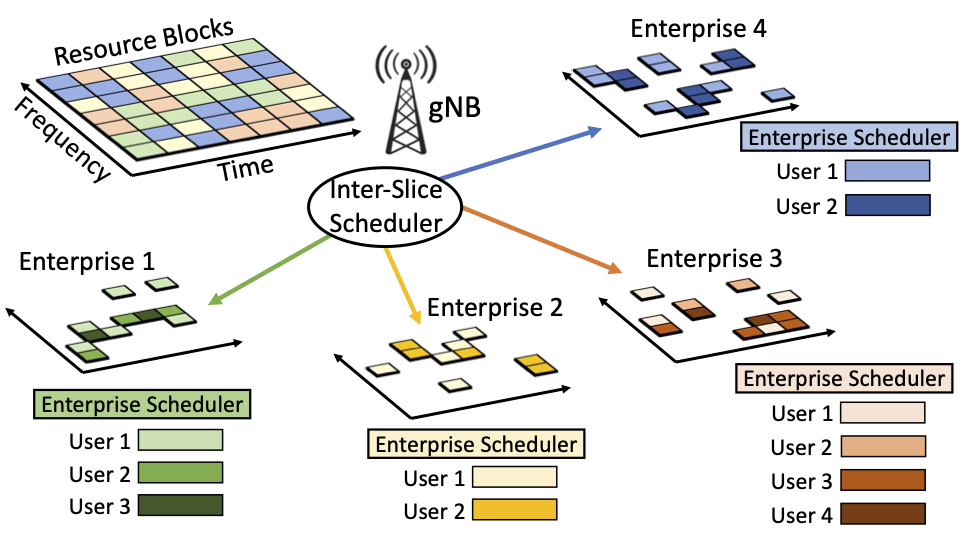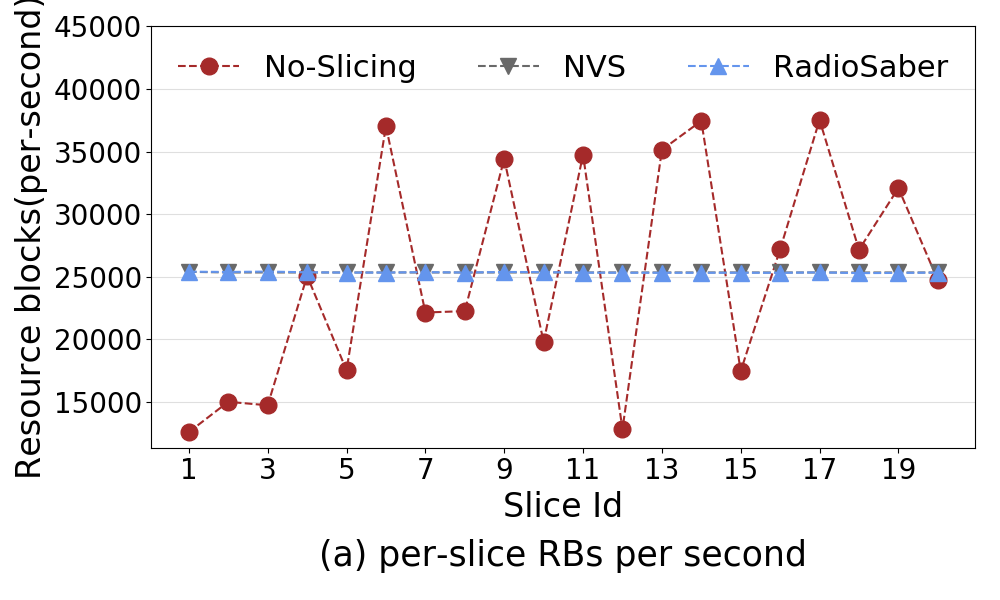

RadioSaber: Channel-Aware 5G RAN Slicing with Customizable Schedulers
RadioSaber is State-of-the-Art 5G RAN slicing algorithm that achieves high spectrum efficiency, ensures weighted fairness among slices subject to their SLA(service-level-agreement), and allows slices to customize how the radio resources are divided across its own users.
The insight of RadioSaber is that we consider channel quality for each user at both levels: inter-slice scheduling(dividing resources across slices) and enterprise scheduling(dividing resources within a slice). Furthermore, we enforce both inter-slice and enterprise schedulers to be greedy so as to break the cyclic dependency due to channel awareness at both levels.
Our evaluation shows that RadioSaber can achieve 17%-72% higher throughput than the existing RAN slicing techniques with real cellular CQI traces.
Illustrative Example
In existing RAN slicing systems, the inter-slice scheduler firstly allocates radio resources to different slices irrespective of channel quality, and then each slice allocates resources to its users in a channel aware manner.
However, this channel-agnostic slicing can result in inferior performance. In the right example, we try to allocate two RBs to each slice. Previous work either allocates all RBs in a TTI to a slice or allocates RBs statically to slices. Both approaches achieves lower aggregate data rate compared with the channel-aware slicing.

Selected Evalution Results


To evaluate how RadioSaber can achieve both high spectrum efficiency and fairness between slices, we configure the experiment to use 20 slices with same weights. Every slice has randomly 5-15 UEs and every UE starts a backlogged flow.
From figure(a), both NVS and RadioSaber allocate same shares of radio resources to slices. In contrast, No-Slicing cannot guarantee the fairness across slices, and the resource is roughly proportional to the number of UEs in a slice.
From figure(b), RadioSaber achieves higher throughput than NVS for each slice by enableing a better(channel-aware) assignment of RBs to slices.
229 Coordinated Science Laboratory, University of Illinois at Urbana Champaign